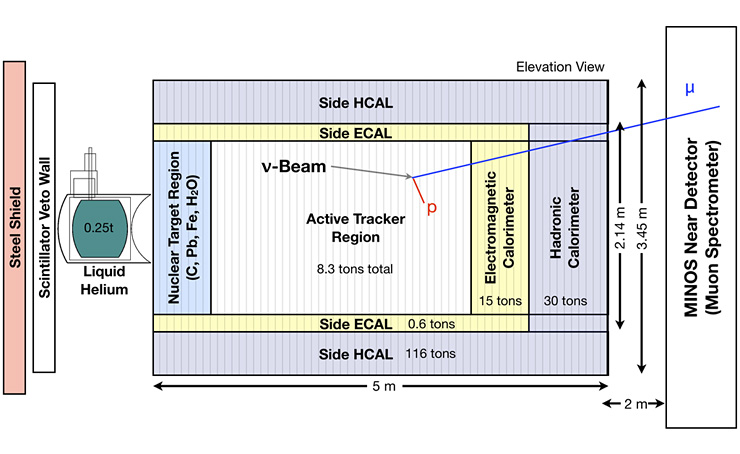MINERvA is about neutrinos
Our universe is awash in neutrinos. As you read this, millions of them pass right through you. Fortunately, they have negligible mass and neglible interactions with other matter, so you're OK. Negibile...but...that tiny amount of mass is enough to create mysteries about the nature of neutrinos and those tiny, rare interactions enable us to build dedicated detectors like MINERvA to study neutrinos.

Schematic of the MINERvA detector.
We have some big questions about those tiny particles. Why do they have mass at all? What can "neutrino oscillations" tell us? What can we learn about how they interact with atomic nuclei?
WHAT ARE THE BIG QUESTIONS ABOUT NEUTRINOS?

Josh Klein, University of Pennsylvania
MINERvA is designed to focus on that last question, using the NuMI neutrino beam at Fermilab. Finding out will help physicists to understand their data much better when they complete the massive Deep Underground Neutrino Experiment (DUNE), which will use a massive neutrino detector way down in the Homestake Minemine at Sanford Lab in South Dakota to examine a neutrino beam from Fermilab in Illinois.
Don Lincoln, Fermi National Accelerator Laboratory
In the MINERvA masterclass, students and teachers make careful measurements of neutrino interactions with the carbon nucleus, pool their results, and discuss what they mean. Understanding those interactions is needed to help physicists understand the data that will come form DUNE.
Now let's go on to how we make the actual measurement of neutrino interaction data in MINERvA. Choose the Measurement link in the menu on the left.


